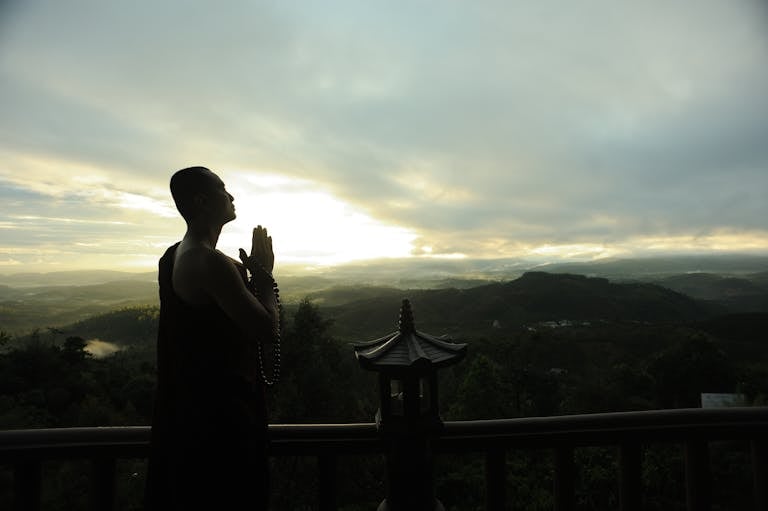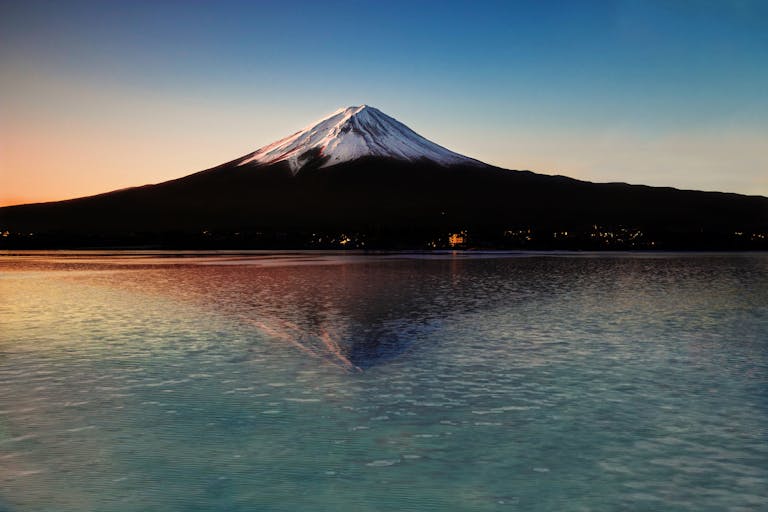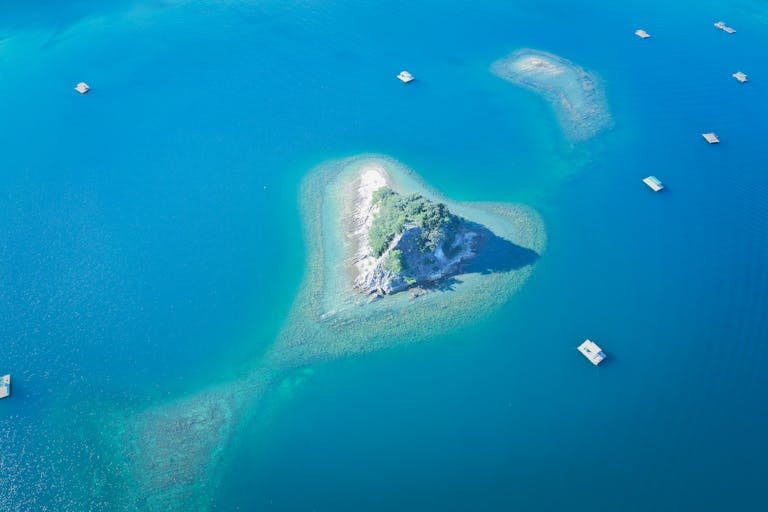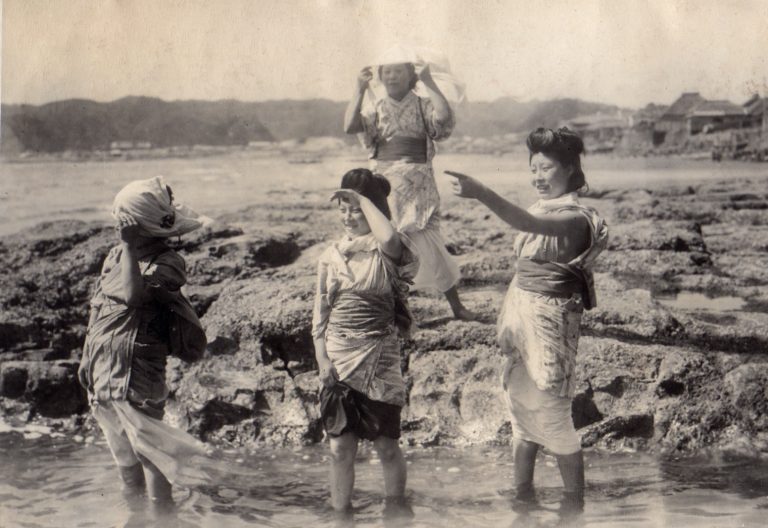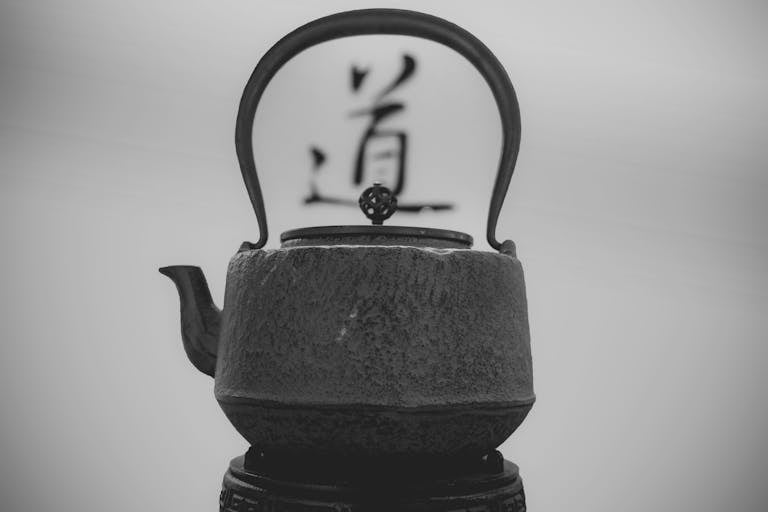Kagawa Prefecture 香川県: Japan’s Pocket-sized Wonder
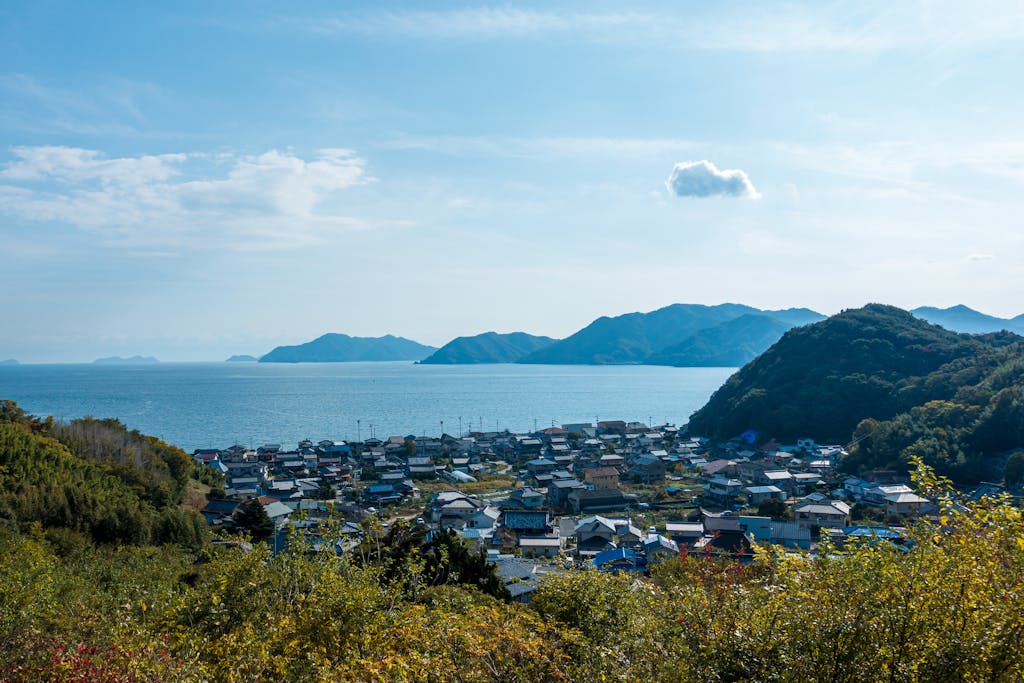
Introduction
To be honest with you, as someone who grew up in metropolitan Tokyo and never really went out to the different parts of my own country Japan, Shikoku island and surroundings always felt almost foreign. It’s a little bit embarrassing—but that’s ok! Now I get to learn and explore all about the whole country. This is why I chose Shikoku to begin my Japan’s geographic journey. I am pretty stoked! Ready? Let’s get rambling in Kagawa prefecture!
Nature and Climate: Little Gems in the Ocean
Small but mighty is a perfectly fitting description for Kagawa Prefecture of Japan. Kagawa is the smallest by land area of all 47 todōfuken (47 prefectures) in Japan. Located north on the island of Shikoku (四国, “four countries”), the smallest of the four main islands make up Japan—Hokkaido, Honshū, Kyūshū, and Shikoku. Shikoku sits on the southern half of Japan surrounded by Seto Island sea and the Pacific. Our little gem Kagawa faces the Seto Island sea which is well-known for its rapid current and the largest whirlpool in the world created by complex shapes of the islands and great tidal differences. There are a total of 24 inhabited islands in Kagawa! That itself is so fascinating. South of the prefecture is bordered by Sanuki Mountain ranges bearing springs that run as rivers quickly flowing into the ocean. The name Kagawa (香川, “fragrant river”) comes from the fragrant birch tree bark flowing in the remote mountain river in the area. Some of Kagawa’s nature highlights:
Seto Inland Sea Ecosystem – Kagawa faces the calm Seto Inland Sea, creating a unique coastal environment with numerous small islands. This relatively sheltered body of water hosts distinctive marine ecosystems and beautiful coastal landscapes.
Mediterranean-like Microclimate – Particularly on Shodoshima Island, Kagawa enjoys a mild, relatively dry climate that’s similar to Mediterranean regions. This special microclimate is what allows olive cultivation to thrive there, making it the first and most successful olive-growing region in Japan.
Yashima Plateau – This flat-topped mountain extending into the Seto Inland Sea is not only historically significant but also a designated Natural Monument of Japan. It features unique geological formations from ancient volcanic activity.
Sanuki Mountains – The mountains forming the southern border of Kagawa create a natural barrier that influences the prefecture’s climate, making it drier than other parts of Shikoku.
Kankakei Gorge – Located on Shōdōshima, this is considered one of Japan’s three most beautiful gorges, with dramatic rock formations and spectacular seasonal colors, especially in autumn.
Rice Terraces of Shōdōshima – The Nakayama Senmaida rice terraces offer a beautiful example of how agricultural practices have shaped the landscape, creating a harmonious blend of human activity and natural beauty.
Angel Road – A natural sandbar on Shodoshima that appears only during low tide, connecting the main island to smaller offshore islands – it’s considered romantically significant as “the path where angels walk.” Of course, you angels can walk on it yourselves.
Bonsai Cultivation – The Kinashi and Kokubunji areas are famous for bonsai growing, with ideal natural conditions that have supported this art form for centuries.
Ritsurin Garden – While human-made, this historic garden in Takamatsu represents a perfect harmony between designed landscapes and natural elements, using the backdrop of Mt. Shiun as a borrowed scenery element (shakkei).
Protected Bird Habitats – Several areas along the coast serve as important rest stops for migratory birds, with designated protection areas.
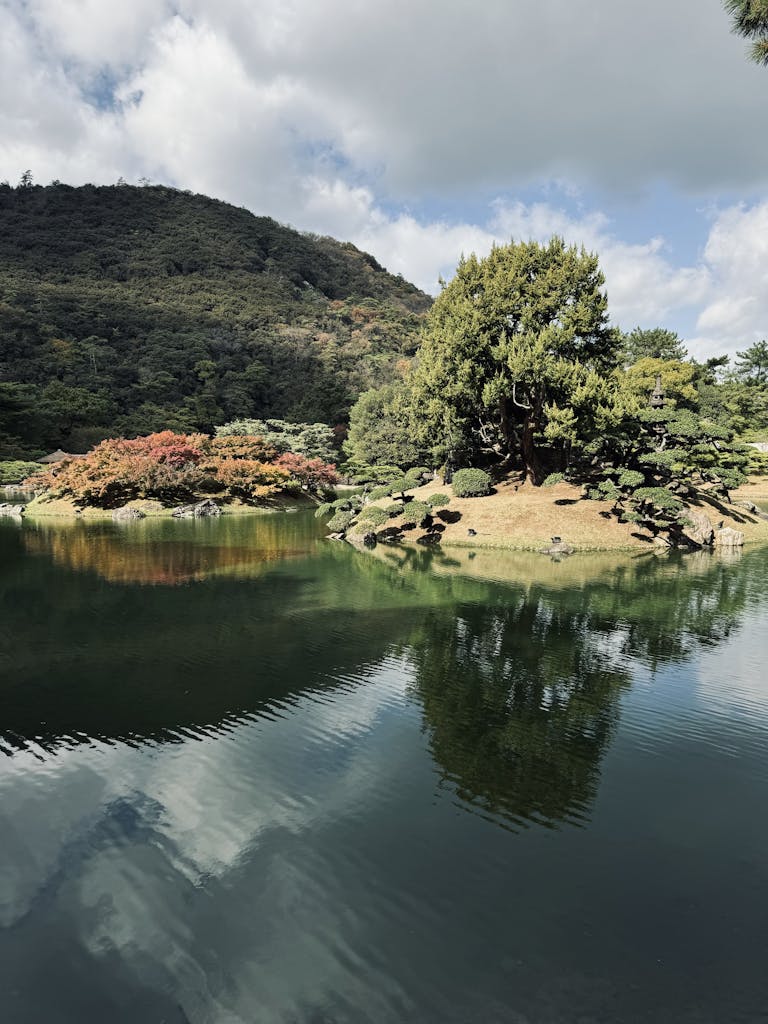
Economy and Industry
The climate in Kagawa is extremely mild, warm and comfortable with very little annual precipitation because of the unique ecosystem created by the Yashima plateau as I wrote in the previous section. Because of this, the area has had challenges growing rice, but instead is well suited and known for cultivation of barley, wheat, and olives. Olive trees and flowers are officially recognized as prefectural trees and flowers, as Shōdō island (小豆島) of Kagawa is the first place in Japan that olive cultivation started and still to this day is the largest producer in the country. Barley has been grown since the Yayoi period 300 BC. The Kagawa wheat known to be high quality was often loved and traded in the country’s major hubs during the Edo period, mostly consumed by samurai class in the Edo city’s various noodle and tempura (deep-fried vegetables and fish) joints. However, for regular citizens throughout Japan including Kagwa, rice was always the main staple food . As I wrote in this post, the policy forced by the GHQ of Allied forces drastically changed Japanese people’s traditional diet post-war. Kagawa is well known for its Sanuki Udon, delicious thick wheat noodles eaten with dipping sauce, but this trend of wheat noodle being consumed as much as rice or more is relatively new, beginning in the 1980s. I just wanted to point that out, because many might think that Sanuki Udon in Kagawa has been people’s traditional food for hundreds of years. That’s not the case. While it is absolutely delicious, I personally much prefer people to eat a natural Japanese traditional diet without any other force’s or organization’s agendas. Just sayin’. Kagawa also has another great industry—natural sea salt production. Kagawa was once the largest producer of natural sea salt in the country. The traditional salt production called Irihama system was used to create high quality, mineral rich salt until the production was shut down in 1972 thanks to the GHQ’s de-salting program that I wrote about in this post. Since the Salt monopoly law was abolished in 1997, some traditional salt fields in Kagawa were restored so that the knowledge and the method of natural salt making can be passed on to the younger generations. Some of Kagawa traditional industry highlights:
Udon noodle production – Sanuki udon is the region’s most famous product
Olive cultivation and processing (especially on Shodoshima Island)
Soy sauce brewing (particularly on Shodoshima)
Stone quarrying – Aji stone is prized for sculptures and construction
Lacquerware production (Kagawa shikki)
Marugame fan making (uchiwa)
Bonsai cultivation (especially in Kinashi and Kokubunji areas)
Glove manufacturing (Kagawa produces a large percentage of Japan’s leather gloves)
Salt production (historically significant along the Seto Inland Sea)
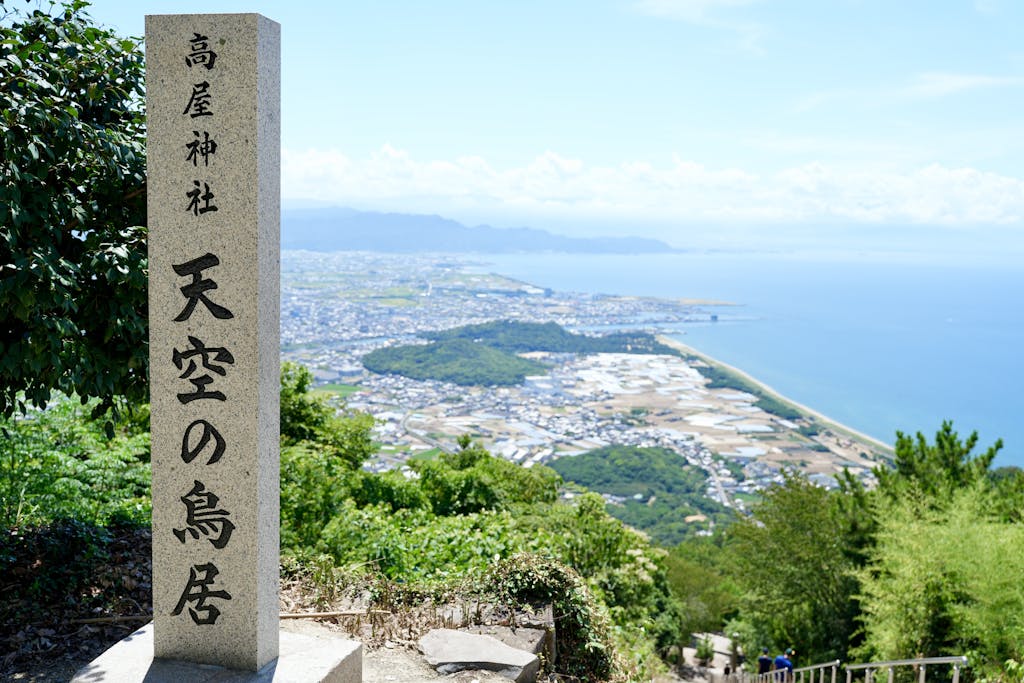
Kagawa’s Spiritual Sites
Home of Shikoku 88 Pilgrimage
When I imagine what Shikoku is like, I think of pilgrimage through thick ancient forest. It turns out that my imagination wasn’t that far off. Kagawa Prefecture is the home of the final leg of the Shikoku 88 Pilgrimage, often referred to as the “Path of Awakening”. This section of the pilgrimage includes some of the most spiritually significant temples, such as Zentsū-ji (Temple 75), the birthplace of Kūkai, a buddhist monk from the Heian era (around year 800 CE) and the founder of Shingon Buddhism. The pilgrimage was performed mostly among training monks as part of their spiritual practice, but by the Edo era in the 1600s, many common people with prayers started to participate in the pilgrimage. Pilgrims completing their journey in Kagawa reflect on the wisdom gained along the way as they visit sites like Yakuriji (Temple 85), nestled on Mount Goken, and Ōkuboji (Temple 88), the pilgrimage’s final stop, where many leave their walking sticks as a symbolic gesture of completion. The prefecture’s blend of coastal beauty and sacred history creates a profound atmosphere, offering both closure and a deeper spiritual connection to the teachings of Kūkai (空海). Here is the list of the last 23 pilgrimage sites from number 66 to the final number 88 located in Kagawa:
66 – Unpen-ji (雲辺寺)
67 – Daikō-ji (大興寺)
68 – Jinne-in (神恵院)
69 – Kannon-ji (観音寺)
70 – Motoyama-ji (本山寺)
71 – Iyadaniji (弥谷寺)
72 – Mandara-ji (曼荼羅寺)
73 – Shusshaka-ji (出釈迦寺)
74 – Kōyama-ji (甲山寺)
75 – Zentsū-ji (善通寺) – Birthplace of Kūkai (Kōbō Daishi)
76 – Konzo-ji (金倉寺)
77 – Dōryū-ji (道隆寺)
78– Gōshō-ji (郷照寺)
79 – Tenno-ji (天皇寺)
80 – Kokubun-ji (国分寺)
81 – Shiromine-ji (白峯寺)
82 – Negoro-ji (根香寺)
83 – Ichinomiya-ji (一宮寺)
84 – Yashima-ji (屋島寺)
85 – Yakuri-ji (八栗寺)
86 – Shido-ji (志度寺)
87 – Nagao-ji (長尾寺)
88 – Ōkuboji (大窪寺)
Shinto Shrines
As I wrote in this post, Shinto is a Japanese animism and spirituality that is deeply rooted in Nature worship. Japan is a unique country in which most people don’t have a set particular religion, but it’s common to see a friendly fusing of multiple disciplines and religions. It is the case for Buddhism and Shintoism as well; people who are on 88 pilgrimage might also visit these shrines to share their gratitude or prayers for the gods of the land. Here’s the list of significant Shinto shrines and also sacred sites in Nature:
Kotohira Shrine (金刀比羅宮, Konpira-san or Kompirasan) – One of Japan’s most famous shrines, requiring visitors to climb 785 stone steps to reach the main shrine. It has been a pilgrimage destination for centuries, particularly popular with seafarers seeking protection.
Kamo Shrine – A historic shrine in Kan’onji City with over 1,000 years of history.
Hiketa Shrine – Known for its impressive wooden architecture and annual festivals.
Tamura Shrine – An ancient shrine in Takamatsu with connections to the Heian period.
Sacred Mountains and Natural Sites
Mt. Zozu (象頭山) – The mountain where Kotohira Shrine is located, considered sacred itself.
Yashima Plateau – A flat-topped mountain with spiritual significance that also played a role in the Genpei War. Home to Yashimaji Temple.
Goshikidai Plateau – A location with unusual geography that has spiritual associations.
Chikurin-ji Bamboo Grove – Associated with Chikurin-ji Temple, this is considered a place of meditation and spiritual reflection.
Artsy Culture and Traditional Craft
Small Gem Kagawa’s charm seems to keep on going. The prefecture is known as a center for the modern art scene, and is popular for open-air art installations. It is the home of the Setouchi Triennale, an international art festival. Here are some artsy spots to get inspired if you’re an artist or just a lover of great modern art:
Naoshima – The Art Island
Benesse House Museum – A fusion of museum and hotel, featuring works by artists like Yayoi Kusama, James Turrell, and Tadao Ando.
Chichu Art Museum – A stunning underground museum designed by Tadao Ando, housing works by Claude Monet, Walter De Maria, and James Turrell.
Art House Project – Abandoned houses transformed into art installations across the island.
Yayoi Kusama’s Yellow Pumpkin – An iconic outdoor sculpture that has become a symbol of Naoshima.
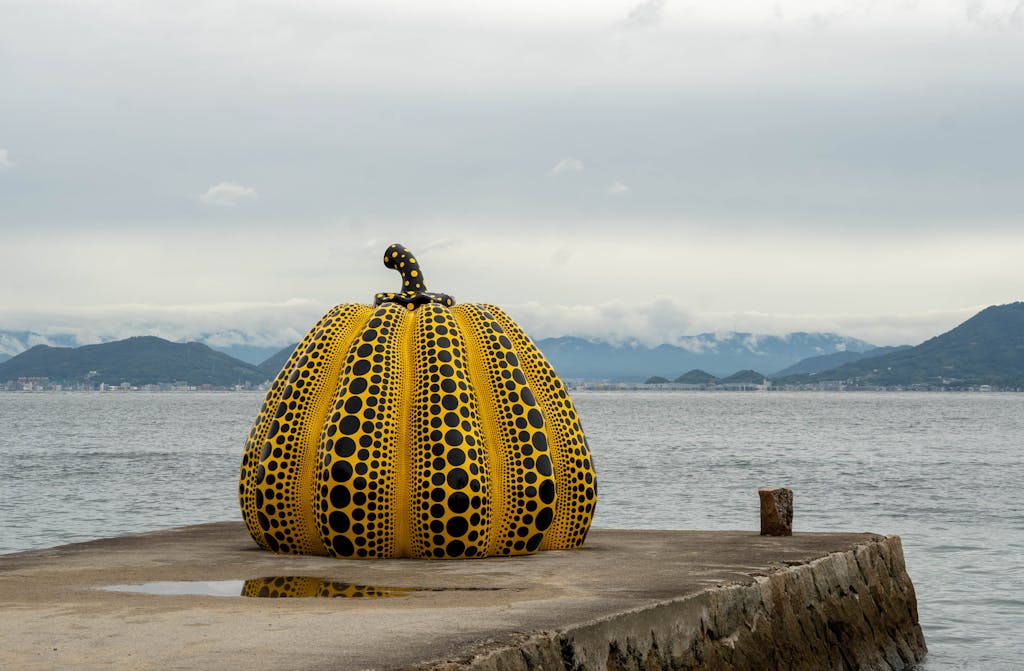
Teshima – Nature Meets Art
Teshima Art Museum – A breathtaking minimalist structure designed by architect Ryue Nishizawa, featuring a single flowing concrete shell that interacts with the environment.
Les Archives du Cœur – A poetic sound installation where visitors can listen to recorded heartbeats from people around the world.
Shodoshima – Art and Olive Groves
Home to several Setouchi Triennale artworks and installations inspired by the island’s olive farming heritage and stunning coastal views.
Olive Park – Not just about olives, but also home to some fun Ghibli studio-themed photo spots (like the broom-riding spot from Kiki’s Delivery Service). If you haven’t checked out Studio Ghibli’s animated films, I highly recommend that you do! They are Japanese classics and favorites.
Takamatsu – Urban Art & Traditional Craft
Isamu Noguchi Garden Museum – Dedicated to the legendary sculptor Isamu Noguchi, showcasing his unfinished works and studio.
Ritsurin Garden – While not contemporary art, this historical Japanese garden is a masterpiece of landscape design, blending nature and aesthetics seamlessly.
Kagawa Lacquerware & Sanuki Uchiwa Fans – If you’re into traditional crafts, you can see (and even try making) local lacquerware and hand-crafted fans in Takamatsu.
Setouchi Triennale – The Ultimate Art Experience
A contemporary art festival held every three years across Naoshima, Teshima, Shodoshima, and other islands. It brings in world-class artists to create site-specific installations that blend art, nature, and local culture.
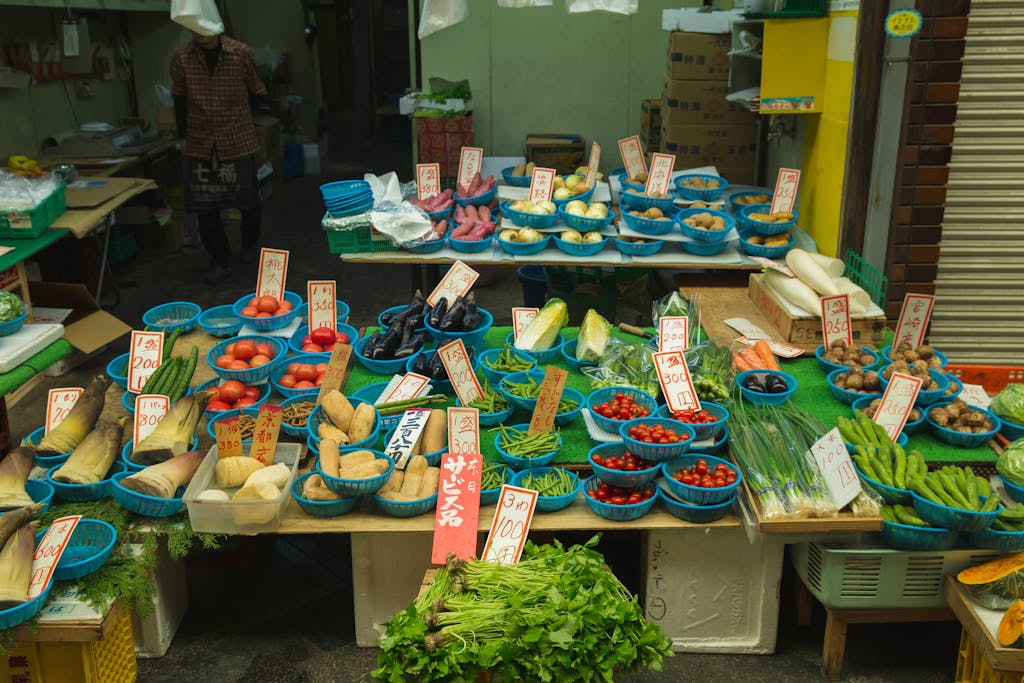
Culinary Treasures
Earlier in the post, we touched on some of the items that this small but mighty prefecture produces. There’s a slight challenge in the water situation as the area doesn’t get as much precipitation as other areas of the country, but creation of water retention pond and waterway throughout the prefecture really helped to nurture the area’s flat farming lands. Surrounded by the ocean and blessed by mild climate, there are so many seasonal bounties all year round. There are multiple famous udon trails in Kagawa in which you will visit multiple udon noodle shops to compare and enjoy them. Here’s an actual itinerary to visit 6 of the best udon noodle shops chosen by Kagawa locals, and it is designed so that you can efficiently go through the trail in a day. Give it a try!
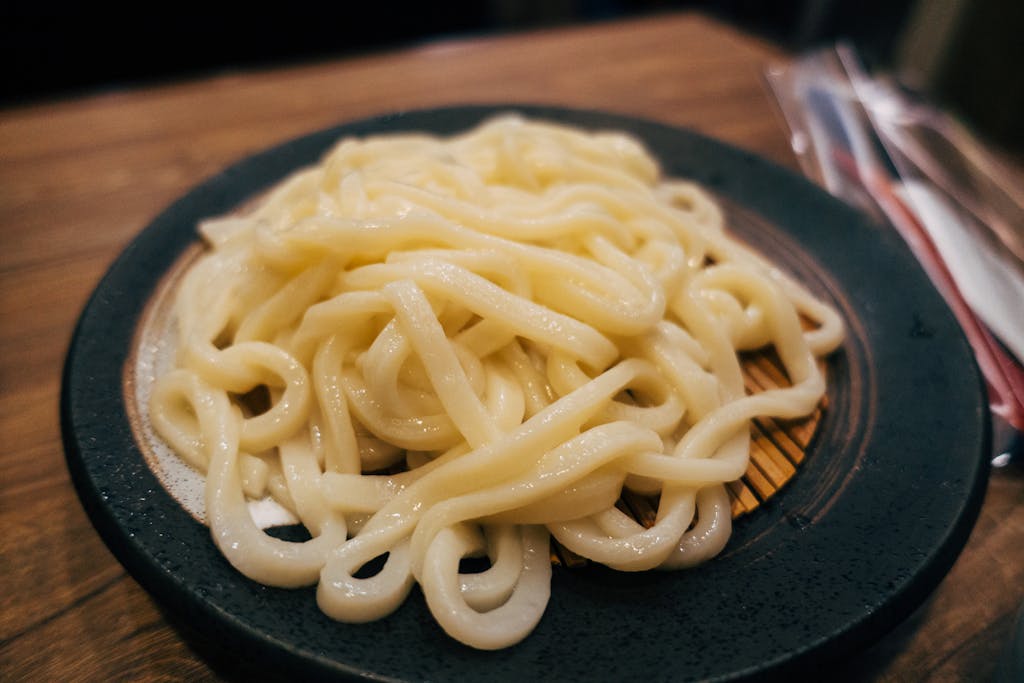
The Best Sanuki Udon Noodle Trail Itinerary Chosen by Locals
It is recommended that you take a car or motorcycle for this adventure!
1. Baka Ichidai (手打ち十段うどんバカ一代) in Taga Town, Takamatsu City.
⇓ 3 minute ride
2. Noguchi Seimen (野口製麺) in Kamifukuoka Town, Takamatsu City.
⇓ 25 minute ride
3. Udon Ichifuku (うどん一福 国分寺本店) in Kokubunji Town, Takamatsu City.
⇓ 17 minute ride
4. Teuchi Menya Ōshima (手打ち麺や大島) in Ōtashimomachi, Takamatsu City.
⇓ 24 minute ride
5. Takion (手織りうどん滝音) in Miki Town, Kida Country.
⇓ 25 minute ride
6. Waraya (ざいごうどん本家わら家) in Yashima Nakamachi, Takamatsu City.
Here are other delicious things you can expect to enjoy fresh during your visit to Kagawa:
Olives and olive oil, Citrus fruits (especially mikan oranges), Strawberries (particularly “Sanuki Gold” variety), Peaches, Figs, Wheat (used for udon production), Lotus root, Bamboo shoots
Seafood:
Hamachi (yellowtail), Sea bream (tai), Octopus, Iriko (dried small sardines), Shirasu (whitebait), Seaweed varieties, Oysters, Prawns
Specialty Food Products:
Shodoshima olive oil, Wasanbon sugar (high-quality fine-grained sugar), Honetsukidori (bone-in chicken), Traditional Japanese sweets (wagashi), Shōyu (soy sauce), Somen noodles (skinny noodles made with wheat and usually served cold)
Family Fun Attraction Spots
Traveling in Kagawa with your family, especially with your children, is pretty easy with all these fun amazing places to go. Many of these places offer family discounts, and have accommodations such as nursing rooms and kids meal options.
Shikoku Mura Open Air Museum – An outdoor museum featuring traditional buildings from around Shikoku, with interactive exhibits where kids can experience historical Japanese life.
New Reoma World – A theme park with rides, attractions, pools (in summer), and seasonal events perfect for families with children of all ages.
Kagawa Museum – Features interactive exhibits on local history and culture with special programs for children.
Takamatsu City Children’s Cultural Center – Designed specifically for kids with hands-on learning activities and fun exhibits.
Ritsurin Garden – Beautiful landscape garden where families can enjoy boat rides, walking paths, and seasonal beauty. Kids especially enjoy feeding the koi fish.
Shodoshima Monkey Park – See wild Japanese macaques up close in their natural habitat.
Shikoku Aquarium – One of the newest and largest aquariums in Shikoku with impressive exhibits featuring marine life from the Seto Inland Sea.
Seto Ohashi Memorial Park – Features exhibits about the impressive Seto Ohashi Bridge, playgrounds, and open spaces for picnics.
Marugame Castle – Kids love exploring this historic castle with its impressive stone walls and panoramic views from the top.
Udon Museums and Workshops – Several locations offer hands-on udon-making experiences, including the Nakano Udon School where families can make and eat their own Sanuki udon.
Olive Park (Shodoshima) – Beautiful park with Mediterranean atmosphere, olive groves, and a small zoo area.
Angel Road (Shodoshima) – A natural sandbar that appears during low tide, creating a “magical path” that children find fascinating.
Wasanbon Sugar Factory Tours – Watch how traditional Japanese sugar is made with opportunities for tastings.
Shodoshima Fruit Park – Pick seasonal fruits and enjoy beautiful views of the Seto Inland Sea.
Takamatsu Sunport – Harbor area with boat tours, shopping, and open spaces for children to run around.
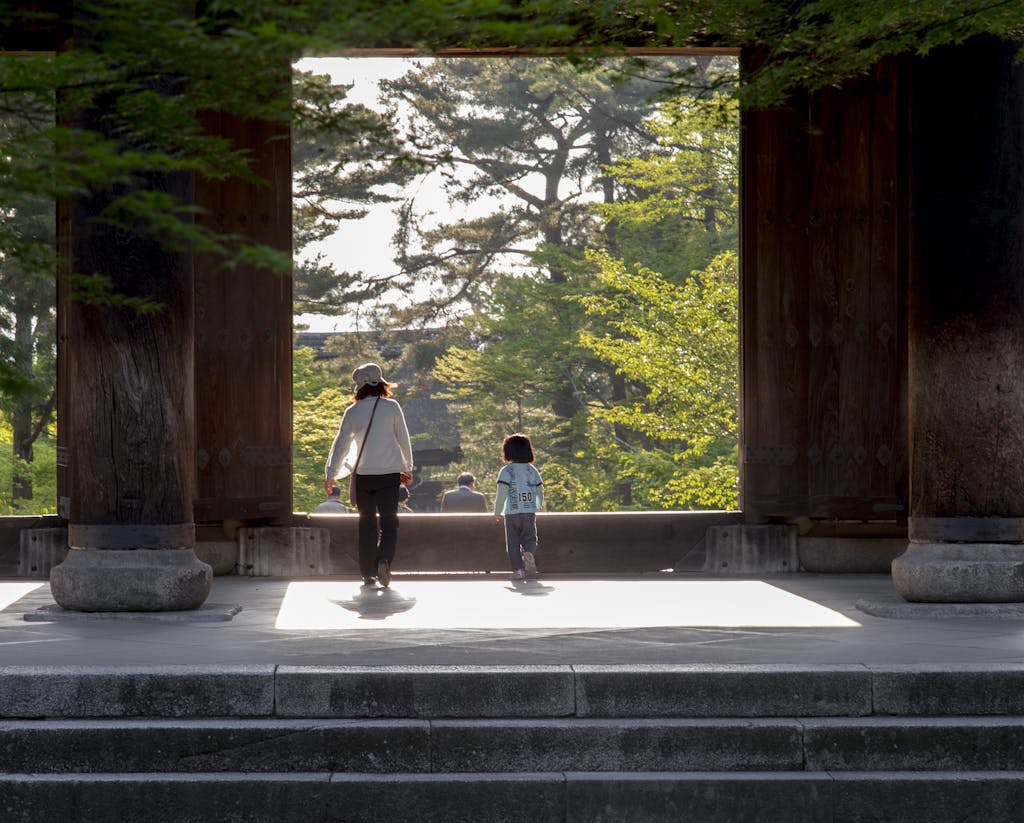
3-Day Kagawa Itinerary
Overwhelmed planning a trip there? No worries! I put together a 3 day itinerary for seeing the small and mighty Kagawa’s gem and experiencing its charms and beauty, balancing the prefecture’s culture, art and nature areas.
Day 1: Exploring Takamatsu City’s highlights including the beautiful Ritsurin Garden, sampling authentic Sanuki udon, and experiencing urban culture
Day 2: A full day dedicated to Naoshima, the famous art island with world-class museums and outdoor installations
Day 3: Two options to choose from: A spiritual journey to important temples and shrines OR An exploration of Shodoshima Island with its Mediterranean atmosphere and natural beauty
Kagawa Prefecture: 3-Day Itinerary
Day 1: Takamatsu City and Surroundings
Morning:
- Arrive at Takamatsu Station/Airport
- Visit Ritsurin Garden (8:30 AM – 11:30 AM)
- One of Japan’s most beautiful landscape gardens
- Enjoy a traditional tea ceremony at the garden teahouse
- Take a small boat ride on the garden pond
Lunch:
- Try Sanuki Udon at Ueharaya or Waraya, two famous udon shops near Ritsurin Garden
Afternoon:
- Visit Takamatsu Castle Park/Tamamo Park (1:00 PM – 2:30 PM)
- Explore the castle ruins and beautiful waterfront
- Explore Sunport Takamatsu and the Takamatsu Symbol Tower (3:00 PM – 4:30 PM)
- Enjoy panoramic views of the Seto Inland Sea from the observation deck
- Shopping at Marugamemachi Shopping Arcade (5:00 PM – 7:00 PM)
- One of Japan’s longest covered shopping streets
Dinner:
- Seafood dinner at Hyogemachi Seafood Market or try local izakaya dishes-I don’t drink alcohol, but izakayas are the funnest food places to go!
Accommodation: Stay in central Takamatsu
Day 2: Art Island (Naoshima)
Morning:
- Early breakfast at hotel
- Take the ferry from Takamatsu Port to Naoshima (departures usually at 8:15 AM or 9:30 AM)
- Visit Chichu Art Museum (10:30 AM – 12:30 PM)
- Underground museum with works by Claude Monet, James Turrell, and Walter De Maria
- Reservations recommended
Lunch:
- Enjoy lunch at the Museum Cafe or Benesse House Restaurant
Afternoon:
- Visit Benesse House Museum (1:30 PM – 3:00 PM)
- Explore the Art House Project in Honmura Village (3:30 PM – 5:30 PM)
- Series of abandoned houses and workshops converted into art installations
- See the iconic Yellow Pumpkin by Yayoi Kusama at Miyanoura Port
Evening:
- Return to Takamatsu by ferry (last ferries usually around 6:30 PM or 8:00 PM)
- Dinner at Takamatsu Hyogoro Street for local specialties
Accommodation: Stay in central Takamatsu
Day 3: Spiritual Kagawa and Shodoshima (Choose one option)
Option A: Spiritual Kagawa
Morning:
- Visit Zentsuji Temple (9:00 AM – 11:00 AM)
- Birthplace of Kobo Daishi (空海, Kūkai) founder of Shingon Buddhism
- Temple #75 of the Shikoku 88 Temple Pilgrimage
Lunch:
- Try vegetarian Buddhist cuisine (精進料理, shojin ryori) near the temple
Afternoon:
- Visit Kotohira Shrine (Konpira-san) (1:00 PM – 4:00 PM)
- Climb the 785 steps to the main shrine (or part way)
- Explore the treasure house and surrounding area
- On the way back to Takamatsu, stop at Marugame Castle if time permits
Option B: Shodoshima Island
Morning:
- Take an early ferry to Shodoshima
- Visit Olive Park (9:30 AM – 11:30 AM)
- Japan’s first successful olive plantation
- Mediterranean atmosphere with beautiful views
Lunch:
- Try olive-based cuisine at one of the park restaurants
Afternoon:
- Visit Kankakei Gorge (1:00 PM – 2:30 PM)
- Take the ropeway for spectacular views
- See the Angel Road sandbar (time depends on tide schedules)
- Visit a soy sauce brewery for a tour and tasting
Evening:
- Return to Takamatsu by ferry
- Farewell dinner featuring local Kagawa specialties
Practical Information:
Transportation:
- Consider purchasing a Kagawa Tourist Pass for unlimited bus travel
- Rental bicycles are available in Takamatsu and Naoshima
- Ferry schedules to islands vary by season
Best Time to Visit:
- Spring (March-May): Cherry blossoms and mild weather
- Fall (October-November): Beautiful autumn colors, especially at Kankakei Gorge
- Avoid rainy season (June) if possible
Tip:
- Many museums on Naoshima are closed on Mondays
- Check ferry schedules in advance as they can change seasonally
- Make reservations for Chichu Art Museum well in advance
Conclusion
There are so many more wonderful places and things that I could include here for the smallest prefecture in Japan as the goodness is very concentrated for its tiny size! This was a perfect ramble to introduce myself to the Shikoku area of Japan. Thank you for joining me on this Kagawa exploration journey. Kagawa is a tiny but mighty place that is a must see hidden gem on Shikoku island. Would you visit Kagawa and experience its unique blend of traditional, natural, and modern beauty? I hope you do! Well friends, this is the end of Kagawa rambles together. I will see you on the next rambling journey. Cheers! かんぱい!
P.S. Please leave a comment below or sign up for my periodic newsletter for more travel trips and hidden gems.

